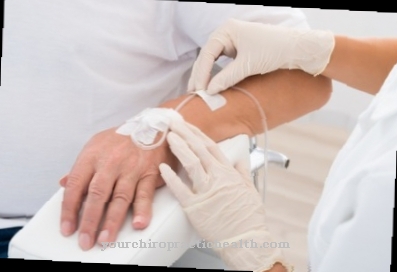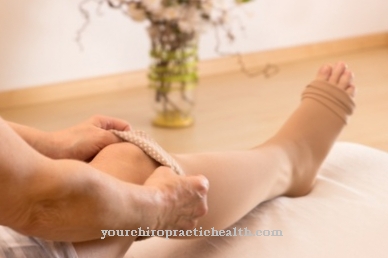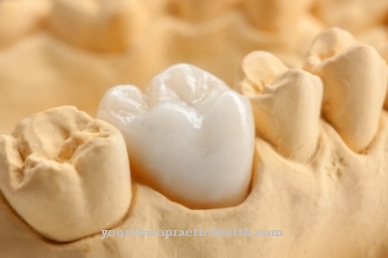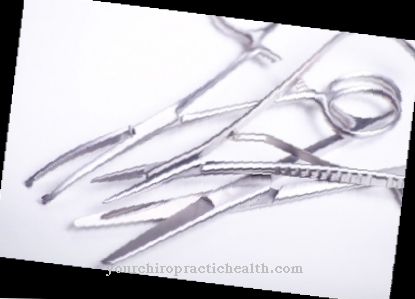Even if incontinence of the bladder or bowel can now be treated well with various conservative and surgical treatment methods, not all cases are cured or improved. In these cases, patients are on products of the Incontinence hygiene reliant.
What is incontinence hygiene?

The term incontinence hygiene stands for measures that are necessary in the event of bladder or intestinal incontinence in order to enable those affected to lead a normal life as possible. When the bladder or bowel stop working properly, it is a major emotional problem for people with incontinence. You can no longer hold your urine or stool and it literally goes "in your pants".
Other people could see or smell it. Incontinence patients suffer from suffering, through which they withdraw more and more from social life. Therefore, despite treatment, they usually also need special products and measures for incontinence hygiene that enable them to lead a largely normal life.
Shapes, types & types
There are incontinence products for different types and degrees of incontinence. Small insoles are often sufficient for mild urinary incontinence. Most of them have a liquid indicator that shows when the insert needs to be changed.
For medium to severe incontinence, there are special inserts with a larger and stronger insert and fixation pants so that the insoles do not slip. For the most severe incontinence, fixation briefs and inserts with a higher storage capacity are usually used. There are special products for men that are better adapted to the male anatomy. There are special bed protection inserts to protect the bed linen.
In the case of intestinal incontinence, special cleaning measures are also required to rid the skin of feces so that it does not become sore and inflamed.
Structure & functionality
Incontinence hygiene products have to meet various requirements. They have to catch urine or faeces that leak out involuntarily, ensure optimal protection of the skin and be able to attach well to the body. Incontinence products must therefore contain various components:
- Absorbent body
- Laundry protection
- skin protection
- Wetness indicator
- Possibilities for fixation
There are three different types of absorbents. Today, two-layer and three-layer absorbent bodies are predominantly used because single-layer absorbent bodies cannot hold the liquid as well and often lead the moisture back to the body.
Good underwear protection depends on an optimal fit. To ensure this, the manufacturers have provided pants and diaper briefs with elastic cuffs on the legs, sometimes also on the stomach and back. The better they fit on the legs, stomach or back, the more effective the leakage protection. The laundry protection, which ensures that the clothes, seat or lying surface of the person concerned stay dry is also particularly important. Various types of film are used to protect laundry, from the conventional smooth film to more breathable variants. In contrast to earlier films, today's foils are thinner and softer, so that the unpleasant rustling noise for the user is eliminated.
Wetness indicators ensure that a necessary change of the incontinence pad is indicated in good time. It is now mostly found in baby diapers.
Either glue dots in the panty are used for fixation or fixation is done using adhesive or Velcro fasteners. With one-piece systems such as briefs they can be omitted because they are automatically fixed.
Modern incontinence hygiene can no longer be imagined without superabsorbents. Granules 0.1 to 0.8 mm in size ensure that the moisture is bound and that the granules swell when they come into contact with liquid and thus hold them better inside the insert.
You can find your medication here
➔ Medicines for bladder and urinary tract healthMedical & health benefits
For people who suffer from incontinence problems, modern products for incontinence hygiene are a real blessing, because they enable them to lead a largely normal life without major restrictions despite these problems.
Despite extensive health education, incontinence is still a taboo subject for many people and significantly restricts the quality of life of those affected. Modern incontinence articles, which have become thinner, easier to use and are more comfortable to wear, make life easier for both those affected and the caregivers. They offer good leakage protection, high wearing comfort and odor protection.
In nursing homes, the use of modern incontinence products helps keep infections under control. In addition, changing beds has become easier for bedridden people and saves time in cleaning and hygiene measures.
In addition, the use of incontinence products ensures that laundry, bed linen and mattresses are spared, but also that the skin of those affected by incontinence is better protected. It would become sore from constant contact with urine and / or feces and could become infected more easily.
Thanks to the good leakage protection, people with mild or moderate incontinence who are still mobile and enterprising can live their life with almost no significant restrictions. As more and more people get older, the need for incontinence products will increase in the future.
In order not to make life more difficult for people with incontinence through regular additional costs, the costs of incontinence products are covered by the health insurance companies. However, the type and scope of reimbursement can vary with different health insurance companies, and some patients have to pay their own contribution for individual needs-based care.



























